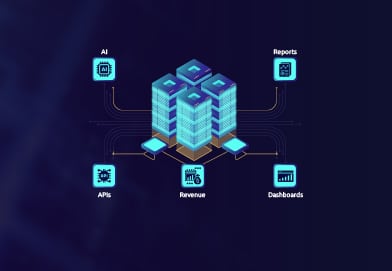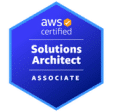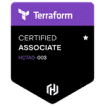Artificial intelligence and machine learning are the future of business.
Drawing meaningful insights from AI and ML will make or break most businesses in this new “AI Revolution,” and new tools will be needed to manage all of this data. AI and ML are useful to decision-makers in identifying new, previously unseen patterns in data. Along with interactive data exploration, it helps us ask new questions and posit new questions beyond the standard business KPIs for a given business process. In recent years, businesses have moved beyond using AI and ML purely on historical data sets. They are now looking for effective and more frictionless ways to operationalize AI and ML. That is, to continuously run ML models on both live, operational data, and historical data.
Let’s take a closer look at one of the fastest emerging data management technologies called Singlestore (formerly MemSQL) which supports operationalizing AI/ML.
In A Hurry?
- Singlestore is the world’s fastest cloud database.
- Singlestore is the best choice for operational analytics, machine learning, and AI.
- Data acceleration gives your business the best data architecture
- Singlestore delivers these capabilities through a unique convergence of data storage called SingleStore.
What is Singlestore?
Singlestore is a distributed, highly scalable relational SQL database that can run anywhere and is commonly known for its speed and ability to scale. What may be lesser known is that it provides all of the capabilities and benefits of popular NoSQL databases but with the full power of ANSI SQL. This means you can support key-value and document-style data types and data access patterns alongside your relational workloads all in a single distributed database. This reduces the number of specialized data stores needed for any use case or application as well as reduces latency. Singlestore has also incorporated other NoSQL datastore functionality, such as inverse indexes for full-text search, time-series, and geospatial capabilities.
Multi Purpose Engine
As a Data Architect or application architect, you can use these capabilities individually to eliminate the need for a front-side caching tier with technologies such as Redis or a search index with Elasticsearch or combine them. For example, you can store raw JSON documents for a product catalog as you would in Couchbase or MongoDB in Singlestore but then execute complex low-latency analytic queries on Singlestore’s columnar store view of that data for maximum speed, efficiency and reduction in data duplication.
Most businesses choose Singlestore to utilize these benefits:
- Built for maximum ingestion speed
- Built for scale with its distributed-native system architecture
- Delivers simplicity by supporting a spectrum of workloads in a single database technology
- Delivers consistent low-latency query responses for fast-changing data for transactional and analytical workloads
- High concurrency of users/customers
- Easy adoption with familiar SQL and as a drop-in replacement for MySQL supporting the MySQL wire-protocol
Many reviewers have commented that Singlestore accelerates and simplifies data infrastructure. It runs smoothly and efficiently for both transactional and analytical workloads. It is a highly durable SQL database to work with. Data Analysts and CTOs like Singlestore because it works with all of your data sources like:
- Facebook and Google ads
- Customer data
- Point of Sale data
- Email auto-responders
- Social media data
- Transaction data
- Customer history
Many Fortune 50 companies choose to use Singlestore along with other popular technologies like Hadoop.
Singlestore is a SQL database that ingests data continuously to perform operational analytics.
You can ingest millions of events per second with ACID transactions.
You can analyze billions of rows of data in these formats:
- relational SQL
- JSON
- geospatial
- full-text search
There are two main products that form Singlestore:
Singlestore
The leading product from Singlestore is called Helios. It is a fully-managed SaaS database available today in multiple regions on AWS, Microsoft Azure, and Google Cloud Platform. It is billed as the world’s fastest cloud database for operational analytics, machine learning, and AI (artificial intelligence).
Singlestore Software
Singlestore is a self-managed operational database built for speed, scale, and simplicity. It is available with the full functionality as a free download to use forever but with a capacity limitation. It will help you realize the full potential of your data. Today, many SaaS startups are building their cloud-first product on Singlestore as you can see from their community and highlighted in the Community Conversations series.
Next, let’s take a look at what types of businesses are best suited for maximizing their data analytics with Singlestore.
Who Should Use Singlestore?
Uber, Fiserv, Kellogg’s, and Comcast are just some of the customers that use Singlestore, according to their website’s “Case Study” section. But don’t let that scare you. These days it is vital for small and medium-sized businesses to start thinking about BI (Business Intelligence) and Analytics. You can find many examples of these customers on the Singlestore YouTube Channel, in the Singlestore Community, and in the Singlestore Forum.
Making a decision based on testing and data is more critical than ever.
Businesses that utilize data analytics are more likely to succeed after five years.
Customer data and profiling have become one of the most popular business scale methods.
This model is based on 3 fundamental principles:
- Customer Acquisition (Cost per acquisition)
- Customer Repeat Business (MRR – monthly recurring revenue)
- Increase in previous customer revenue (Month over month)
The types of businesses that could use Singlestore are:
- Cloud services
- e-Commerce
- Logistics
- Retail
- Software
- Artificial Intelligence
- Time Series
- Transportation
- Social Media
Interested to learn more about Singlestore? Watch this video that goes over multiple topics, such as :
- How To Evaluate New Technologies
- Choosing the right database
- Design for growth, flexibility, and schema evolution
- Singlestore auto-sharding and independent scaling of concurrency and data
- Augmenting Amazon RDS Mysql for Data Analytics
- Migrating caching and Redis key-value lookup workloads
- Removing Mysql Replica Lags
- Comparing Singlestore with Redshift
- And more…
Now, let’s look at some of Singlestore’s biggest competitors.
Main Singlestore Competitors
Singlestore is primarily designed for in-the-moment operational analytics use cases and cloud-native HTAP , but it can also handle OLTP and OLAP data warehouse scenarios. The competition for Singlestore is growing by the day and includes technologies like:
VoltDB
The most common direct competitor. Also a SQL-based in-memory relational database system but designed for OLTP.
Clickhouse
Open-source OLAP database system. Designed for fast queries and data ingest. It has a complicated setup and many manual operations. They are recognized by several data storage “engines” for maximum performance. Highly trained technicians are required.
Apache Ignite
In-memory data “grid,” which supports OLTP access. Uses SQL and other APIs. It also works well when using Apache Spark.
MapD, Kinetica, SQream
GPU-powered databases with fast results on big data-sets. It is the right choice if you need the most rapid results with visualizations. Not suitable for OLTP.
Redshift, BigQuery, and Snowflake
Managed Data Warehouses for OLAP scenarios. Various levels of operational effort and personnel.
Cockroach DB
Distributed relational database with PostgreSQL. Focuses on high availability, automatic sharding, and optimized replication.
CitusDB
An extension to PostgreSQL turns it into any distributed SQL database. Allows Postgres to be flexible and scalable across nodes. Does not use in-memory processing.
TimescaleDB
Another extension of PostgreSQL that creates tables with automatic partitioning. An excellent option for highly advanced analytics requirements.
Microsoft SQL Server
In-memory OLTP to process tables with RAM. SQL is not natively distributed and only has replication and HA (high availability) setups available.
Apache Druid
OLAP system designed for low-latency and high-cardinality data. Pre-aggregating data as it comes in—very complicated setup.
Vertica, Teradata
Legacy column-store databases used by large enterprises. Very advanced features, mainly when used with Greenplum or MonetDB.
Splice Machine
Built on top of Hadoop and has tight integration with Apache Derby and Apache Spark.
Powerful Operational Analytics Using Singlestore
Most businesses are either starting new data architecture projects or are transitioning from legacy to modern architectures. The data analytics market is vast and valued at over $50b for the next 18 months.
Singlestore plays a crucial role in data scaling and customer profiling.
The most popular technologies that are used with Singlestore include:
- Hadoop
- AWS S3
- Kafka
- Spark
- Tableau
- Microstrategy
- Looker
Next, let us look at the benefits of doing data acceleration with Singlestore.
What Is Data Acceleration?
Data acceleration helps organizations helps businesses address three challenges:
Movement – how to move data more quickly to where it is needed
Procession – how to gain actionable insights as soon as possible
Interactivity – faster queries submitted users and applications
Data acceleration allows companies to start treating data as a supply chain.
This enables the smooth flow and distribution of data to every ecosystem of partners, suppliers, and even customers.
Data acceleration allows a business to leverage more data sources and turn it into meaningful actions more quickly.
Data acceleration can give you three distinct advantages in business:
- Supports faster processing of crucial data points
- Supports faster connectivity
- Reduces user wait times
Once your business is ready to accelerate your data, you will need to focus on these architectural components:
Big data platforms
Complex event processing
appliances
Cache clusters
In-memory databases
Ingestion
Data services agencies like Data Sleek can help you choose the best technologies for your business, including Singlestore.
Next, we will learn more about why companies choose Singlestore.
Top 10 Reasons To Choose Singlestore
The main reasons businesses choose Singlestore are:
- To support in-the-moment, low-latency automated operational decisions and analytics to improve customer experience and business operations insights
- To support the rapid & cost-effective scaling of client concurrency for apps, users, and APIs
- To simplify the data infrastructure environment and reduce as many as 11 technologies to 2 in some cases while continuing to support all of the data access patterns and styles, like key-value, document, search, relational, etc.
- To modernize to a distributed-native database and eliminate the costly maintenance of sharding middleware over single-node databases
- To provide cost-effective & affordable scalability
- To provide better customer experience through reliable high availability
- To provide a reliable system of record
- To run a modern database in any cloud or hybrid environment through support of Kubernetes
- To provide a data management solution that includes streaming data integration and change data capture as part of the product, not purchased separately
- And finally, to interact with a forward-looking innovative community which is driving the future of data management technologies
The benefits of modern data integration using Singlestore include:
- Design once and can be used many times
- Gain microscopic knowledge about the data
- Manage complex environments
- Optimized actions
- Change, extend and migrate business data
- Make quick business decisions
Below we have compiled the Top 10 business advantages to using Singlestore for your database architecture.
- Application Integration
Use SOAP/REST APIs using cloud-based services.
- Huge volume data
IT departments are moving towards data lakes as the single source of truth and centralized data. Data integration tools make heavy use of Spark and Hadoop.
- Data speed support
Data velocity is improved when using Singlestore. New data integrations should have the ability to handle data regardless of the size.
- Event-based
Singlestore works with event-based frameworks. This allows a business to respond quickly to consumer and market trends.
- Document-centric
With the increase in data regulations like GDPR, the tool you use should have compliance-related features that document data collection. This is a relatively new requirement for the latest data.
- Hybrid integration
Most cloud-based data warehousing and engineering tools are cloud-based. Businesses that choose to remain on-premises must also be able to use cloud-based services.
- Accessible through SOAP/REST APIs
Monitoring, securing, and organizing vast sums of data but be done using common frameworks like SOAP/REST APIs.
- Connectivity
New data integrations require connectivity to various data systems. When the data is analyzed and visualized, it becomes an essential tool of the business.
- Elastic
Singlestore allows your data architecture to be elastic based on day to day changes in the business. If a data analyst leaves the company, it should not hinder the overall operation of the business.
- Integration as a Service (IaaS)
Singlestore allows your business to be cloud-based and data-driven. As business data gets more complicated, Singlestore gives you the best data insights.
Singlestore offers a simple and powerful management system.
It is often said that Singlestore can meet all requirements from all of its users.
Pros:
- just-in-time scaling
- no downtime or offline, ability to do online alters
- automatic sharding
- lock-free data structures
- hybrid OLTP and OLAP architecture
Cons:
- relatively new database having been available since 2012
- not fully ANSI SQL compatible as seen with databases like Oracle as well
- works with a database optimizer
Power of Analytics Using Singlestore Conclusion
Modern businesses must use these technologies to gain a competitive advantage in their markets. Using Singlestore is the best way to have a highly-distributed, highly-scalable SQL database that can run virtually anywhere. One of the best ways to implement Singlestore is to speak to one of our experts at Data Sleek. We have completed many Singlestore projects for our clients. If you are interested in learning how Singlestore can help your business, navigate our Contact Us page and send us a little more information.
We look forward to helping you grow your business!







